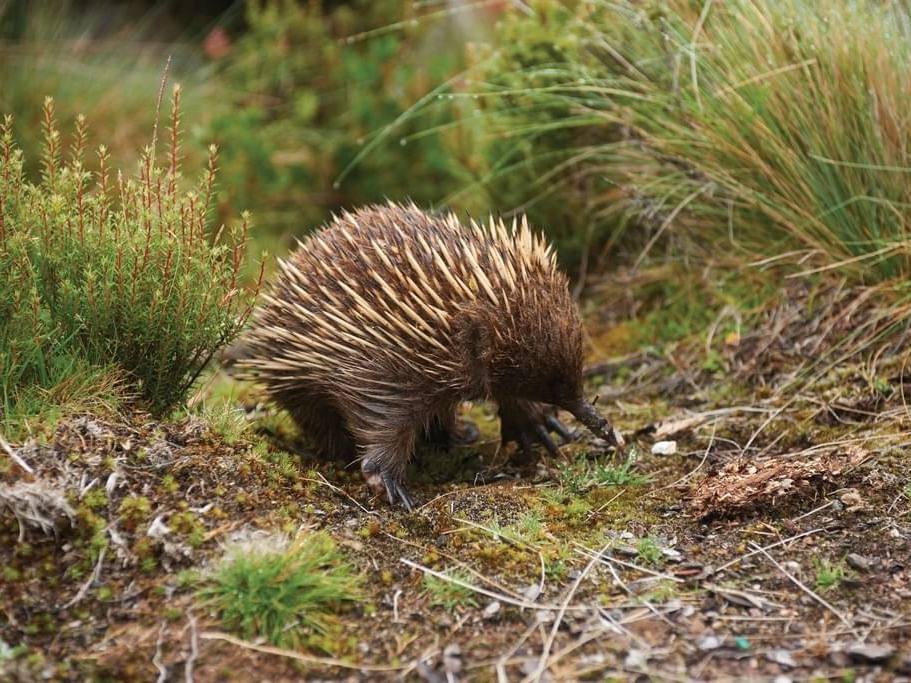Wildlife - Platypus and Echidnas
The west coast of Tasmania is home to two of Australia’s most intriguing animals—the platypus and the echidna.
Platypus
Platypus are shy, intriguing animals that can occasionally be seen near river banks, where they dwell in burrows. This fascinating, semi-aquatic animal is one of the world’s two monotremes, or egg-laying mammals. Platypus live in rivers, lakes and streams, including the Gordon River and its tributaries. (There is also a resident platypus in Strahan’s Botanical Creek, along the walk to Hogarth Falls).
Female platypus lay up to two marble-sized eggs in a nesting burrow, which she incubates between her tail and body. Newborn young (about the size of a jellybean) are then fed on milk, which seeps through the skin of the female’s abdomen.
As if the platypus was not peculiar enough, male platypus also have a spur on the inside of their hind legs that releases a powerful venom—making them one of only five known venomous mammals in the world.
Echidnas
The round, spiny shape of foraging echidnas can often be seen in bushland and on roadsides throughout Tasmania during the warmer months.
This intriguing animal is also a monotreme, and has a distinctive beak-like snout and covering of bristling spines that protrude through its thick coat of fur. Female echidnas lay a small, leathery egg directly into a pouch. After hatching, echidna young (sometimes called puggles) feed on secretions of milk from their mothers’ abdomen.
There are four species of echidna. The short beaked echidna is native to Australia while the eastern long-beaked echidna, the rare western long-beaked echidna, and the critically endangered Sir David’s long-beaked echidna (named for Sir David Attenborough), are all native to Papua New Guinea.
Image credit: Tourism Tasmania & Stewart Crossett
